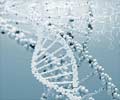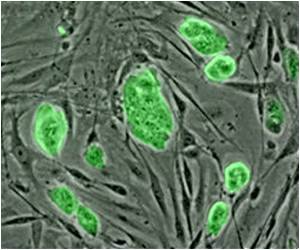In two mouse models, replacing the Tafazzin or TAZ gene prevented cardiac dysfunction and scarring and reversed established cardiac dysfunction in Barth syndrome.

‘Adding a healthy TAZ gene normalized cardiac dysfunction in patients with the rare metabolic disease, seen in boys, caused by mutation of tafazzin or TAZ gene.’
Read More..




In 2014, to get a better understanding of Barth syndrome, William Pu, MD, and colleagues at Boston Children's Hospital collaborated with the Wyss Institute to create a beating "heart on a chip" model of Barth syndrome.Read More..
The model used heart-muscle cells with the TAZ mutation, derived from patients' own skin cells. It showed that TAZ is truly at the heart of cardiac dysfunction: the heart muscle cells did not assemble normally, mitochondria inside the cells were disorganized, and heart tissue contracted weakly. Adding a healthy TAZ gene normalized these features.
But to truly capture Barth syndrome and its whole-body effects, Pu and colleagues needed an animal model. "The animal model was a hurdle in the field for a long time," says Pu, director of Basic and Translational Cardiovascular Research at Boston Children's and a member of the Harvard Stem Cell Institute. "Efforts to make a mouse model using traditional methods had been unsuccessful."
Modeling Barth syndrome in mice
Recently, however, the lab of Douglas Strathdee's group at the Beatson Institute for Cancer Research in the U.K. overcame the challenge and created animal models of Barth syndrome. In new work, Pu, research fellow Suya Wang, PhD, and colleagues characterized these "knockout" mice, which came in two types. In one, the TAZ gene was deleted in cells throughout the body; in the other, just in the heart.
Advertisement
Mice lacking TAZ just in their cardiac tissue, which all survived to birth, showed the same features. Electron microscopy showed heart muscle tissue to be poorly organized, as were the mitochondria within the cells.
TAZ gene therapy also prevented cardiac dysfunction and scarring when given to newborn mice, and reversed established cardiac dysfunction in older mice -- whether the mice had whole-body or heart-only TAZ deletions.
Getting the gene in
Further tests showed that TAZ gene therapy provided durable treatment of the animals' cardiomyocytes and skeletal muscle cells, but only when at least 70 percent of heart muscle cells had taken up the gene.
That's where the challenge will lie in translating the results to humans. Simply scaling up the dose of gene therapy won't work: In large animals like us, large doses risk a dangerous inflammatory immune response. Giving multiple doses of gene therapy won't work either.
"The problem is that neutralizing antibodies to the virus develop after the first dose," says Pu. "Getting enough of the muscle cells corrected in humans may be a challenge."
Maintaining populations of gene-corrected cells is another challenge. While levels of the corrected TAZ gene remained fairly stable in the hearts of the treated mice, they gradually declined in skeletal muscles.
"The biggest takeaway was that the gene therapy was highly effective," says Pu. "We have some things to think about to maximize the percentage of muscle cell transduction, and to make sure the gene therapy is durable, particularly in skeletal muscle."
Source-Eurekalert












